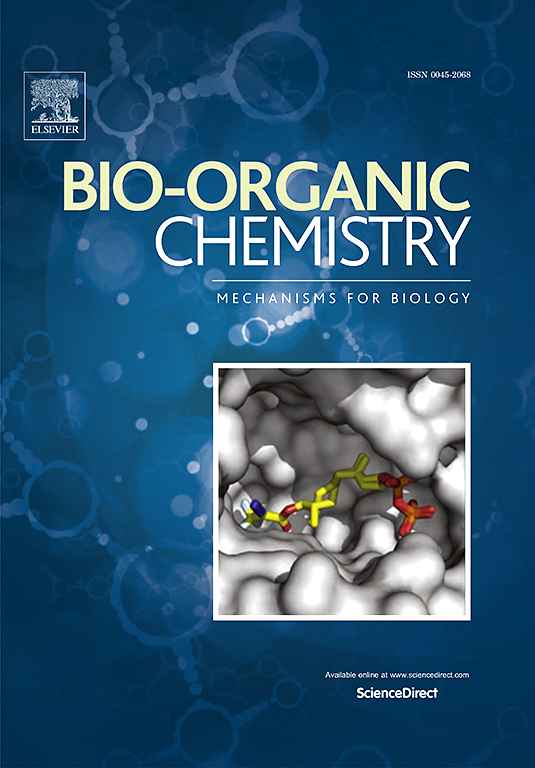Design and application of a water-soluble triphenylamine-based probe for rapid analysis of α-amylase activity
IF 4.5
2区 医学
Q1 BIOCHEMISTRY & MOLECULAR BIOLOGY
引用次数: 0
Abstract
In this study, we designed and synthesized a series of aggregation-induced emission luminogens (AIEgens) with D-π-A structures by regulating the donor (D) and acceptor (A) of electron. Unlike GT01 and GT03, the water solubility of GT02 and GT04 synthesized by coupling galactose to them through α-1,4-glycosidic bonds is significantly improved. To reduce the impact of ultraviolet light on α-amylase activity, GT04 was selected as the research object and further studied its response behavior to α-amylase. Certainly, α-amylase could cleave the glycosidic bond of GT04 to change its water solubility, thereby significantly aggregating GT03 and emitting bright fluorescence. Research results present that the limit of detection (LOD) of the α-amylase activity detection curve constructed based on the structural change of GT04 is 0.1864 U/L, and the limit of quantitation (LOQ) is 0.5647 U/L. This method exhibits high specificity and selectivity, with a detection error not exceeding 5 % even when compared to commercial kits, further demonstrating the high reliability of it. Additionally, the reaction time of GT04 and α-amylase has been reduced to 3 min, significantly shortening the overall testing duration. Research results also tell us that high-quality smoke could increase the activity of salivary α-amylase (sAA) by activating the sympathetic nervous system. Undoubtedly, this method provides an effective rapid testing tool for assessing human sensory experiences and the development of high-quality tobacco through the fluctuation of sAA activity.

求助全文
约1分钟内获得全文
求助全文
来源期刊

Bioorganic Chemistry
生物-生化与分子生物学
CiteScore
9.70
自引率
3.90%
发文量
679
审稿时长
31 days
期刊介绍:
Bioorganic Chemistry publishes research that addresses biological questions at the molecular level, using organic chemistry and principles of physical organic chemistry. The scope of the journal covers a range of topics at the organic chemistry-biology interface, including: enzyme catalysis, biotransformation and enzyme inhibition; nucleic acids chemistry; medicinal chemistry; natural product chemistry, natural product synthesis and natural product biosynthesis; antimicrobial agents; lipid and peptide chemistry; biophysical chemistry; biological probes; bio-orthogonal chemistry and biomimetic chemistry.
For manuscripts dealing with synthetic bioactive compounds, the Journal requires that the molecular target of the compounds described must be known, and must be demonstrated experimentally in the manuscript. For studies involving natural products, if the molecular target is unknown, some data beyond simple cell-based toxicity studies to provide insight into the mechanism of action is required. Studies supported by molecular docking are welcome, but must be supported by experimental data. The Journal does not consider manuscripts that are purely theoretical or computational in nature.
The Journal publishes regular articles, short communications and reviews. Reviews are normally invited by Editors or Editorial Board members. Authors of unsolicited reviews should first contact an Editor or Editorial Board member to determine whether the proposed article is within the scope of the Journal.
 求助内容:
求助内容: 应助结果提醒方式:
应助结果提醒方式:


